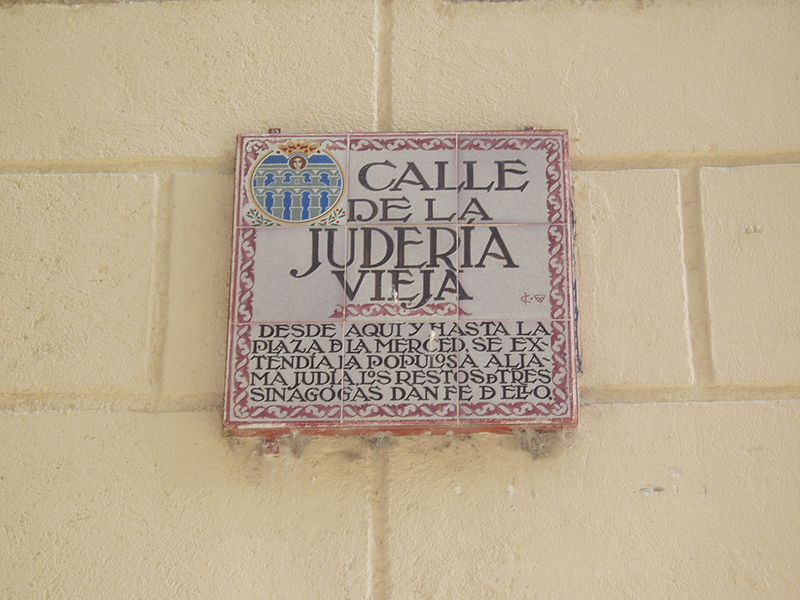Spain and Portugal have a rich Jewish history. Jews were in the Iberian Peninsula since the days of the Roman empire. Jewish culture flourished under Moorish rules, where Christians, Muslims and Jews coexisted. Even after the Christian reconquest, Jews, Muslims, and Christians continued to coexist. In the century before the Inquisition relations began to deteriorate between Christians and non Christians. The Spanish Inquisition ordered the conversion or the expulsion of all Jews and Muslims, or death. This lasted centuries.
Modern Spain and Portugal are very different and tolerant societies that now embrace the historical contributions of the Moors and of Jews. Historical and cultural tourism to the Iberian Peninsula have exploded. Among the main attractions, aside from the beautiful castles and palaces are cathedrals, synagogues, and mosques. When one visits the places of worship of the new Abrahamic religions in the Iberian Peninsula it becomes apparent the substantial influence all three religions have on Spanish and Portuguese culture and art to this day. The cities I have explored to date are Barcelona, Toledo, Madrid, Sintra, Lisbon, and Malaga.
Barcelona’s gothic district contains the Jewish quarter in Barcelona. The main attraction there is Old Synagogue of Barcelona. There’s a gift shop within the synagogue. One can also pay a guide to give an overview of the history of the synagogue and of Jews in Spain in general and in Catalonia in particular. The signs outside mark the general area of the Jewish quarter.
Madrid’s old Jewish quarter was essentially demolished along with the cemetery. Built over the cemetery is Plaza del Oriente, a beautiful open space/garden in between Teatro Real (the opera house) and Palacio Real (the Royal Palace). Both Teatro Real and Palacio Real give tours. The streets nearby have excellent restaurants. There are a number of fantastic shops in which one can purchase a variety of clothes, souvenirs, and other assorted items. El Corte Ingles, a big Spanish shopping mall is nearby. So are a couple of gay saunas. This area has excellent metro access and there is a Renfe Cercanias (suburban commuter line) nearby. Madrid also has a Jewish museum. One must e-mail the museum for an appointment.
Speaking of Renfe Cercanias, one can take the Renfe to the Escorial outside of Madrid. The Escorial has an amazing monastery on a hill. It was built by King Phillip II to house the remains of his father and is a combination of palace, church, and library. It is was one the most visited sites in Spain. Nearby is the Prince’s House, which also housed the royal family at times.
One also takes Renfe Cercanias to Toledo. Toledo is one of the most history rich sites in Spain. It’s full of castles, cathedrals, mosques, and synagogues. The Cathedral of Saint Mary is an amazing site, and upon paying entrance one pays a tour guide to explain the history of the cathedral and the art inside. The Jewish quarters has two remaining synagogues. One synagogue, the Synagogue of El Transitio has been made into the Sephardic Museum. The Museum stunning artwork and various artifacts including clothes from Jews living in Spain before the Inquisition. The Synagogue Saint Mary the White is also a museum. Both synagogues are a short walk from each other.
Lisbon is a city full of very old buildings that are undergoing renovation. The construction in the city is truly massive. The Jewish Community of Lisbon is close to the Barrio Alto (Lisbon’s main gay neighborhood). This area has a lot of restaurants, shops, and bars. The area is well served by the metro and by trolleys. In order to schedule a tour at the Jewish Community of Lisbon, one must e-mail them and set up a time. The tour guide gives an excellent overview of Jewish history in Portugal.
One can take the commuter train from Portugal to Sintra. There are a number of spectacular palaces in Sintra. My favorite place is the Moorish castle. The Moorish castle was built by the Moors when they controlled most of the Iberian Peninsula. The Moorish Castle is perched on top of a hill and one can take amazing photos from this place. It is next to Pena Palace. Pena Palace was one of the residences of the Portuguese royal family during the 19th century.
Malaga in Andalucia has the Alcazaba. The Alcazaba is an amazing Moorish palace and fort. The Alcazaba has a lot of exhibits on the pottery that was made in Andalucia during the Moorish era. The Alcazaba is in the center of Malaga, close to parks, wonderful restaurants, and the Jewish quarter. A new Jewish center with both a synagogue and museum is currently under construction in the Jewish quarter of Malaga. A short train ride away from the center of Malaga (using Renfe Cercanias) is Torremolinos. Torremolinos is a LGBT friendly beach area with amazing beaches, clubs, restaurants and stores/shopping.
There are other places I will be visiting in the Iberian Peninsula later this year and next year as I am based on Barcelona. But for those who like historical sites or those interested in Jewish heritage, the Iberian Peninsula is wonderful place to examine.


























